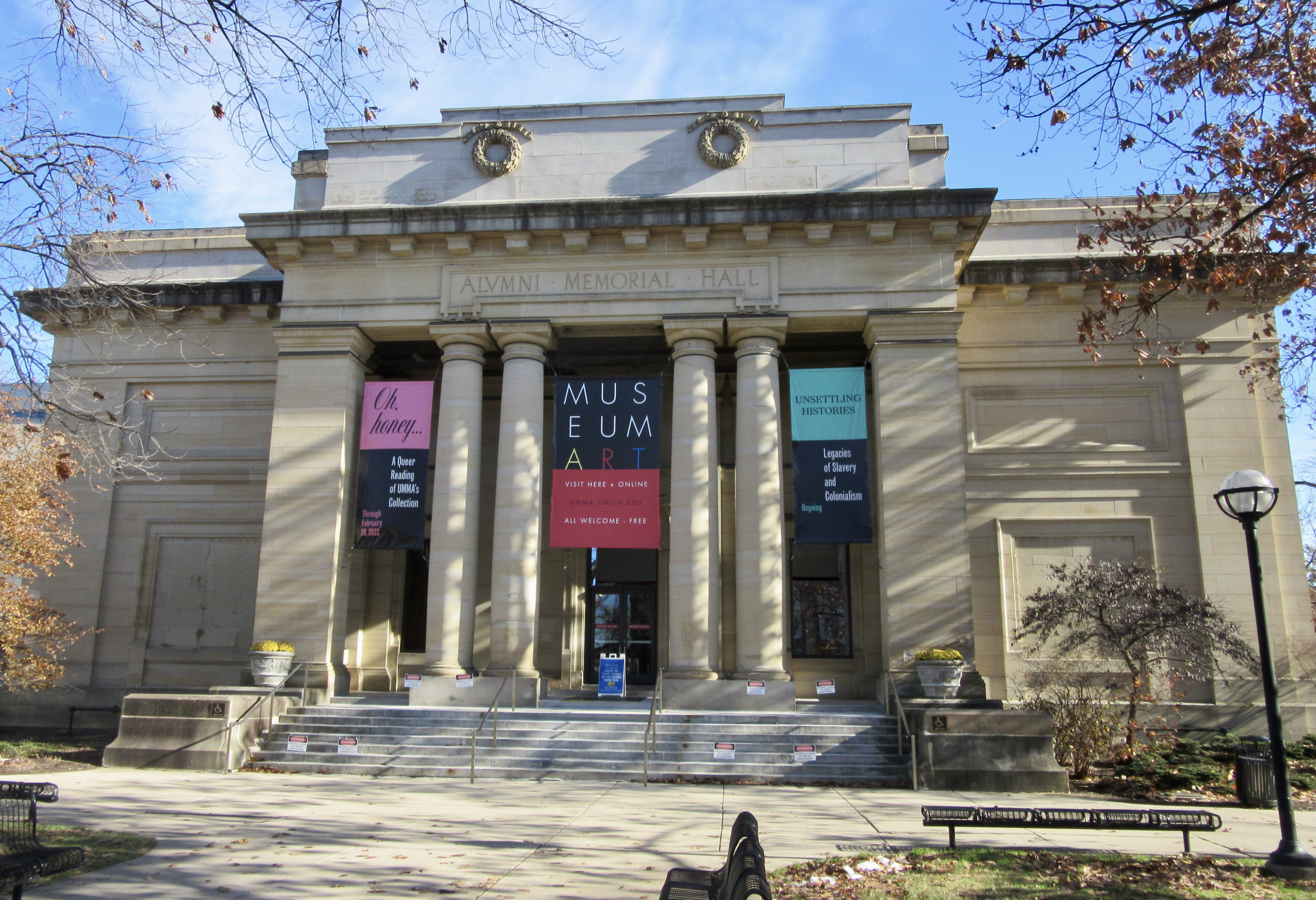University of Michigan Museum of Art, 525 S State St, University of Michigan, December 4, 2021

Year
2021
Month
December
Day
4
History of the University of Michigan Museum of Art
"Art is a fundamental element of the University of Michigan and a key component of the university’s vision statement, which calls art a “human essential and a foundation that helps to define our future.” Art has long occupied a prominent place in the university’s mission and values—UMMA is the most public reflection of this priority. The university’s art collections were freely available to the campus and community in 1856, before many of the country’s museums were founded. Artists on the U-M faculty, including UMMA’s founding director painter Jean Paul Slusser, have understood and emphasized the importance of art on the U-M campus—the value of the collection for primary research and the ability of art to substantively extend learning and teaching. Slusser, as an artist and museum director, especially understood the capacity of art to illuminate the lived experience of contemporary society.
UMMA was formally established in 1946 as the primary site for engagement with visual art on campus. The Museum was founded with a strong commitment to the acquisition of contemporary art; UMMA’s early exhibitions focused primarily on modern and contemporary art, a significant departure from the university’s early focus on antiquities. UMMA’s original building, Alumni Memorial Hall, a campus war monument that memorialized the fallen students and faculty of the Civil and Spanish-American Wars, was built through the generosity of U-M alumni and designed specifically to house U-M’s growing art collection. UMMA began as an encyclopedic museum: an institution dedicated to displaying and interpreting art from the world’s many cultures, usually in distinct galleries divided geographically. Like its peers, UMMA did not acknowledge its own subjectivity as a museum rooted in a university in the global North, or how or why it prioritized certain collections over others, or how it chose to interpret them.
When UMMA expanded in 2009, more than doubling its square footage through the addition of the Maxine and Stuart Frankel and Frankel Family Wing, its mission expanded too. It embraced its role as a “town square for the arts” important to both the campus and the region. Along with its galleries, UMMA’s collection has also grown over the years and now totals more than 21,000 objects. The mandate and mission of UMMA has evolved to meet the needs of the state and to fulfill the promise of a meeting place for the arts. This plan builds on UMMA’s history, more fully realizing the ambition of the Museum and its potential as an arts-driven campus connector and a dynamic center for the arts. It also seeks to reckon with the colonialist and racist histories of the Museum and U-M, acknowledging that many of the Museum’s and university’s mythologies are built through the lens of white supremacy."